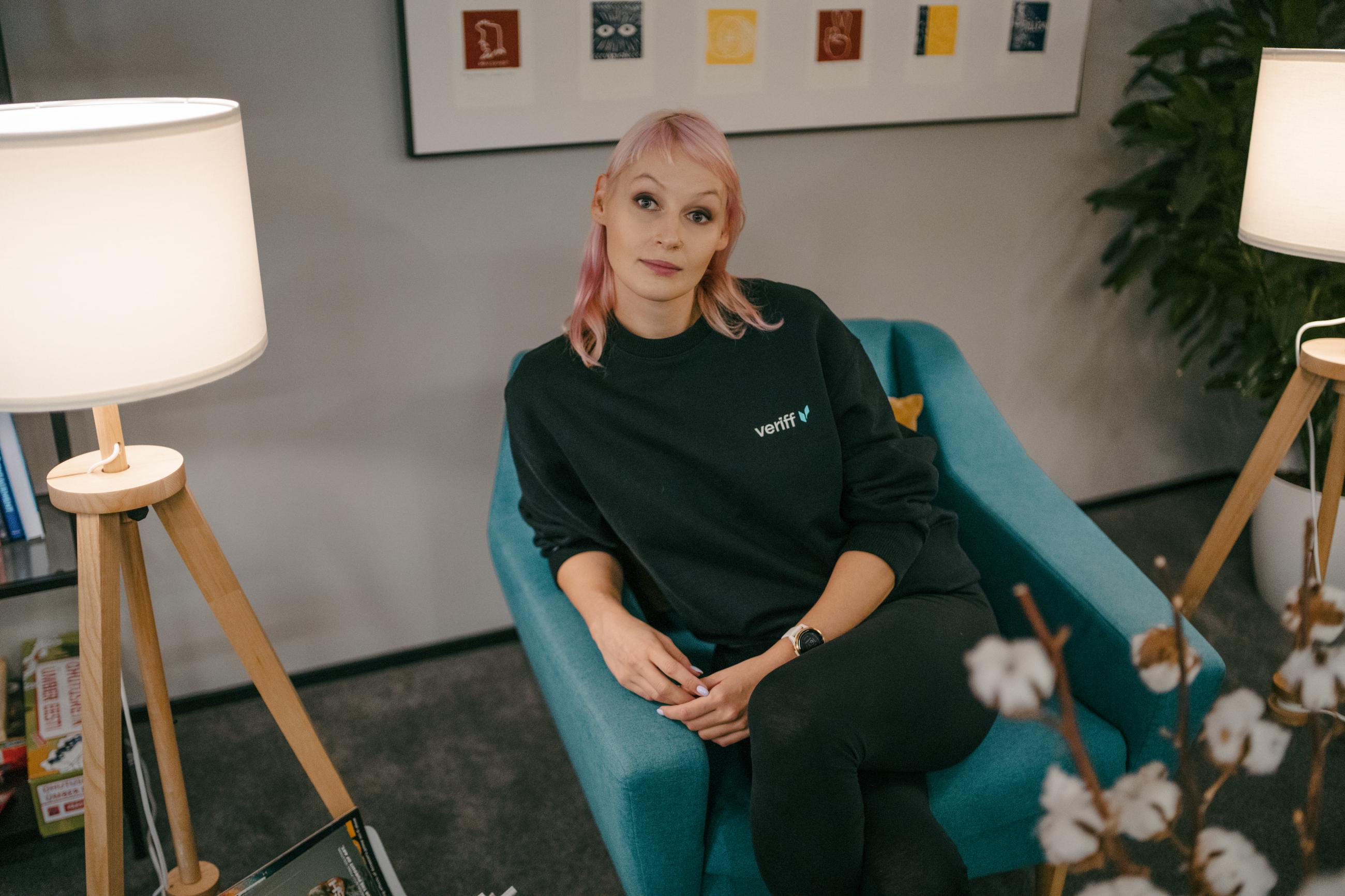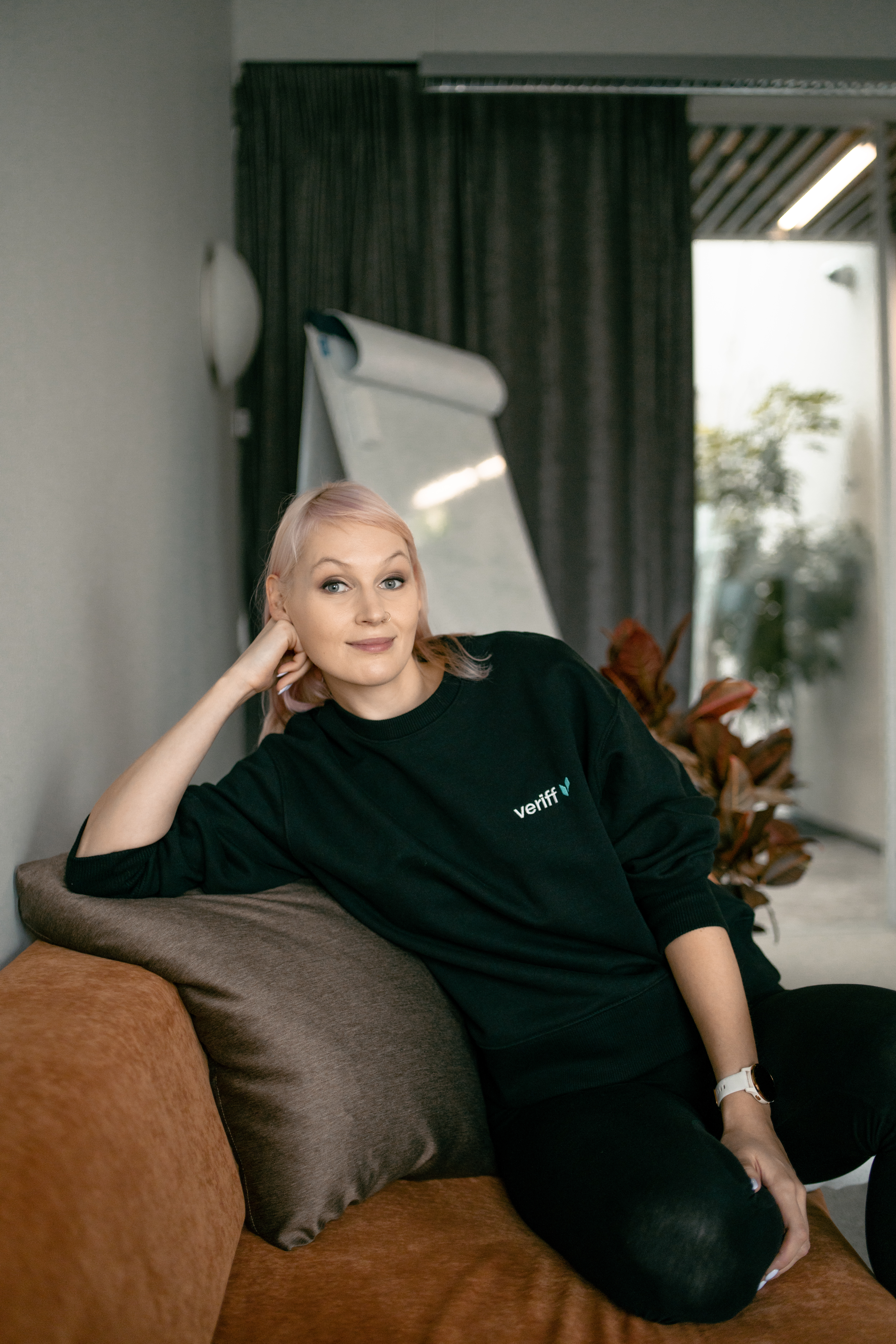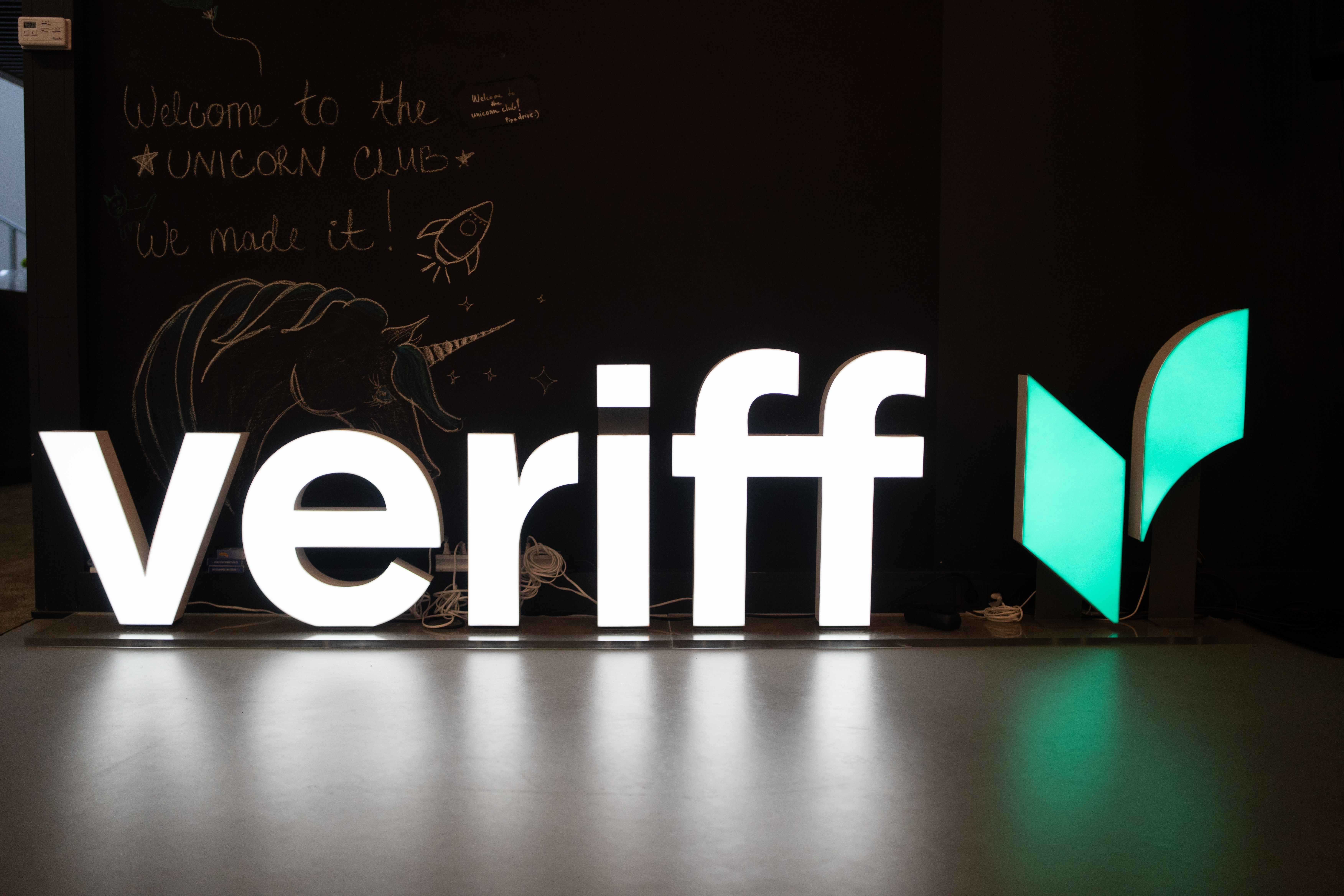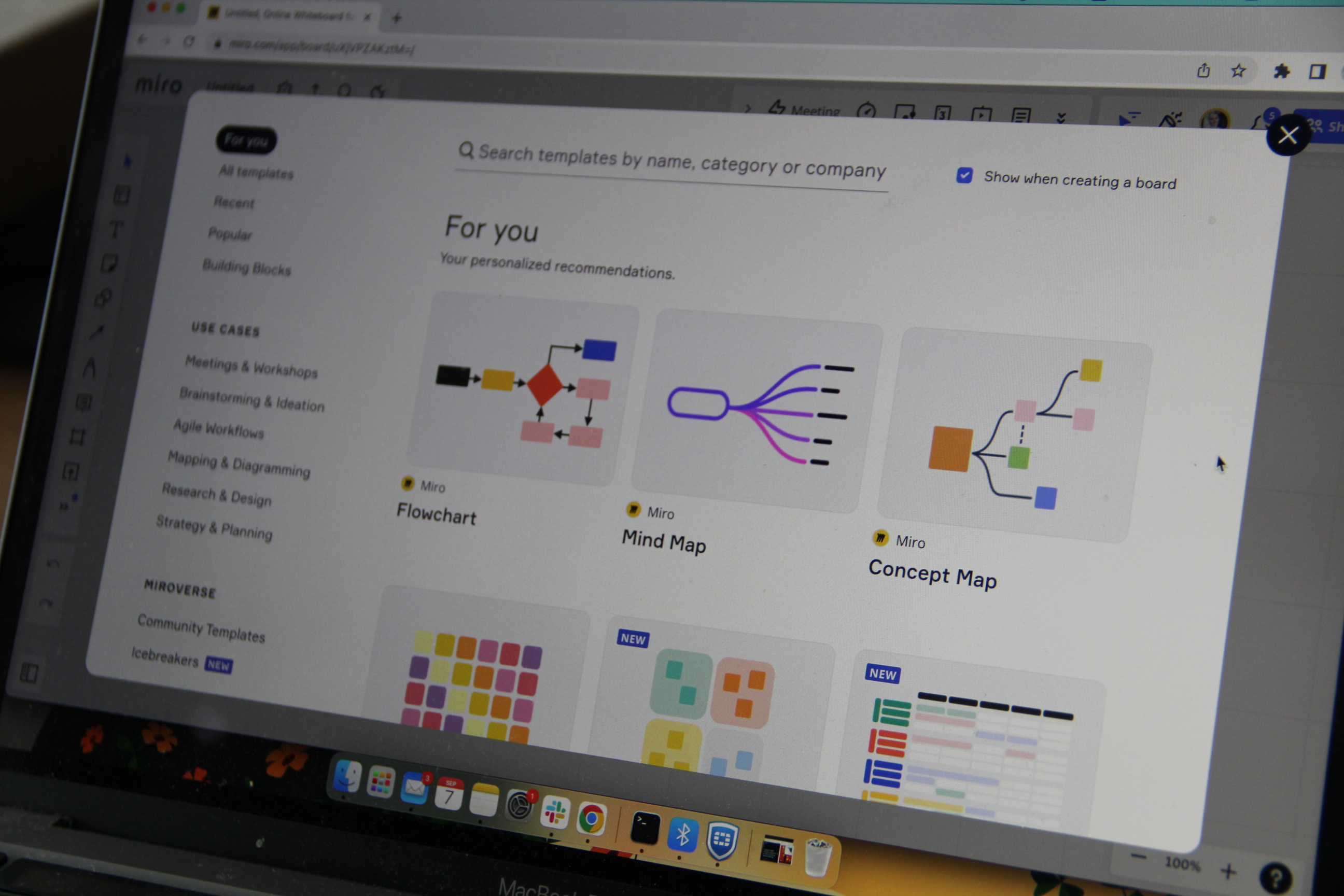Maria Vous completed her master’s degree in Human-Computer Interaction in the Tallinn University 2 years ago. Today she is working as a senior user researcher in Veriff, a global identity verification service company founded in Estonia. Read from this latest blog post what Maria thinks about the studies at Tallinn Uni and about the digital world generally!

Maria Vous. Photo: Tallinn University School of Digital Technologies
Maria, you have a bachelor’s degree in Journalism and master’s degree in Communication management from Tartu University. How did you decide to study Human- Computer Interaction in Tallinn University?
Although I was doing my masters in Communication management, I had been already working in the marketing department for a software and product development company for several years. My interest towards product management, service design and user experience was very high and I knew I needed something else. After a little research, I found a Human-Computer Interaction master program in the School of Digital Technologies in Tallinn University. This program seemed to contribute to the learning of technical skills, along with soft skills. That sounded very interesting to me and so I applied!
Were your expectations fulfilled?
Sometimes it was challenging, but at the same time an inspiring process. I think it's easier if before studying HCI the person has some understanding of or background in the product development world, even if these are minimal touch points as a designer, project manager, researcher, developer, intern.
One thing I can say surely about this program is that it taught us to see how computer human interaction should look like. HCI tried to make us very responsible regarding how we develop technology and showed all the concerns and the consequences we have to take into account. This was the main idea, which our teachers were trying to make us understand. To show that it's not just about having solutions. Digital solutions don't just save the world. If you have a digital solution, you'll still have a server which uses a lot of energy. So it is a tradeoff and you really have to make conscious decisions and see all the details, which may make your life complicated as a designer or researcher, but have a big impact on other people's life. I think this was the philosophical background behind HCI, which I really liked.

Maria Vous. Photo: Tallinn University School of Digital Technologies
Did you work on some interesting projects during your studies?
First of all I would like to mention that we had a really cool and deep course about how to evaluate users' experience. It’s amazing that University gives a chance to try out those things, and to do the whole product development journey as a researcher or designer, because in the agencies you will never have time for that.
I remember we also had a theoretical project where the main task was to map how different technological systems interact with each other and try to do some very basic tech architecture. For that we needed to come up with a product idea which would use different data sources and have devices interacting with each other. Our group came up with a "Talking plants'' idea, a companion for elderly people, who often feel lonely. It would then be connected to the person’s tracker and as soon as it would see that he/she is anxious or tired, it would say: “ Hey.. I need some water now” or “I need to get more sun, take me to another room!”. This was super nice, because here again we had to think about finding a solution to the problem, not just designing a cool device.
Now you are working in the global identity verification service company Veriff. What do you do here?
I am a senior user researcher. I'm working with stakeholders and companies who are building financial technologies. And what do I do? One part of my job is working on improving our UX by researching and defining issues and thinking along on how to solve them. And then there's the strategic research part - mapping client needs, possible future features and ways how to innovate the product.

Veriff. Photo: Tallinn University School of Digital Technologies
Which skills gained from HCI studies do you use on an everyday basis?
Usability testing is something we always do in Veriff. Although I had some understanding about it before coming to TLÜ, in university I got more knowledge and structural view of it. Usability testing has a lot of forms and options. It’s possible to measure how much time a person spends during this or that online operation, which issues faces and so on. And gathering this kind of information is very important in our work.
What problems do you see in the digital world today?
One of the main problems and also one of the reasons why I am in Veriff is to understand how to protect people’s privacy and keep them secure from online threats. Veriff is not just about verifying your name or checking how old you are, but to keep honest users safe and to stop fraudsters. Another big problem in the digital world is the protection of the children, who are a target of many online threats that could be avoided by identity verification. How can we stop this? That is what we are working on and I'm very proud to be part of it.
Who is responsible for providing this security for kids? Parents?
I think this is the responsibility of designers, developers and product owners. They should understand and take into account that this exact product that you are working on is meant for kids. In general, product teams add some elements which catch kids’ attention, but most of those products are not made specifically for children. The question is: do you want to have universal design for everyone, or do you want to build a target based product and try to make it more accessible?
Do you have a favorite digital tool?
Miro, the digitized whiteboard! It's a very helpful tool for visualizing ideas, workshops, collaborating with your colleagues and mapping processes and flows.

Visual collaboration platform. Photo: Tallinn Univerisity School of Digital Technologies
What would you advise to the new students of the Human-Computer Interaction program?
The biggest thing I got from the Tallinn University School of Digital Technologies are people. I remember my teachers who were really cool: David, Vladimir, Sonia and others. I advise new students to make contacts, collaborate, work with different people, exchange ideas and be open minded. Be ready to gain new knowledge and also have your own input in that process. You have to involve yourself and be curious! If you are curious, you will succeed!
Blog article was originally published on Tallinn University School of Digital Technologies blog.
Read more about Tallinn University and the School of Digital Technologies.
Find YOUR study programme from our programme's page.
Read more blog posts:
